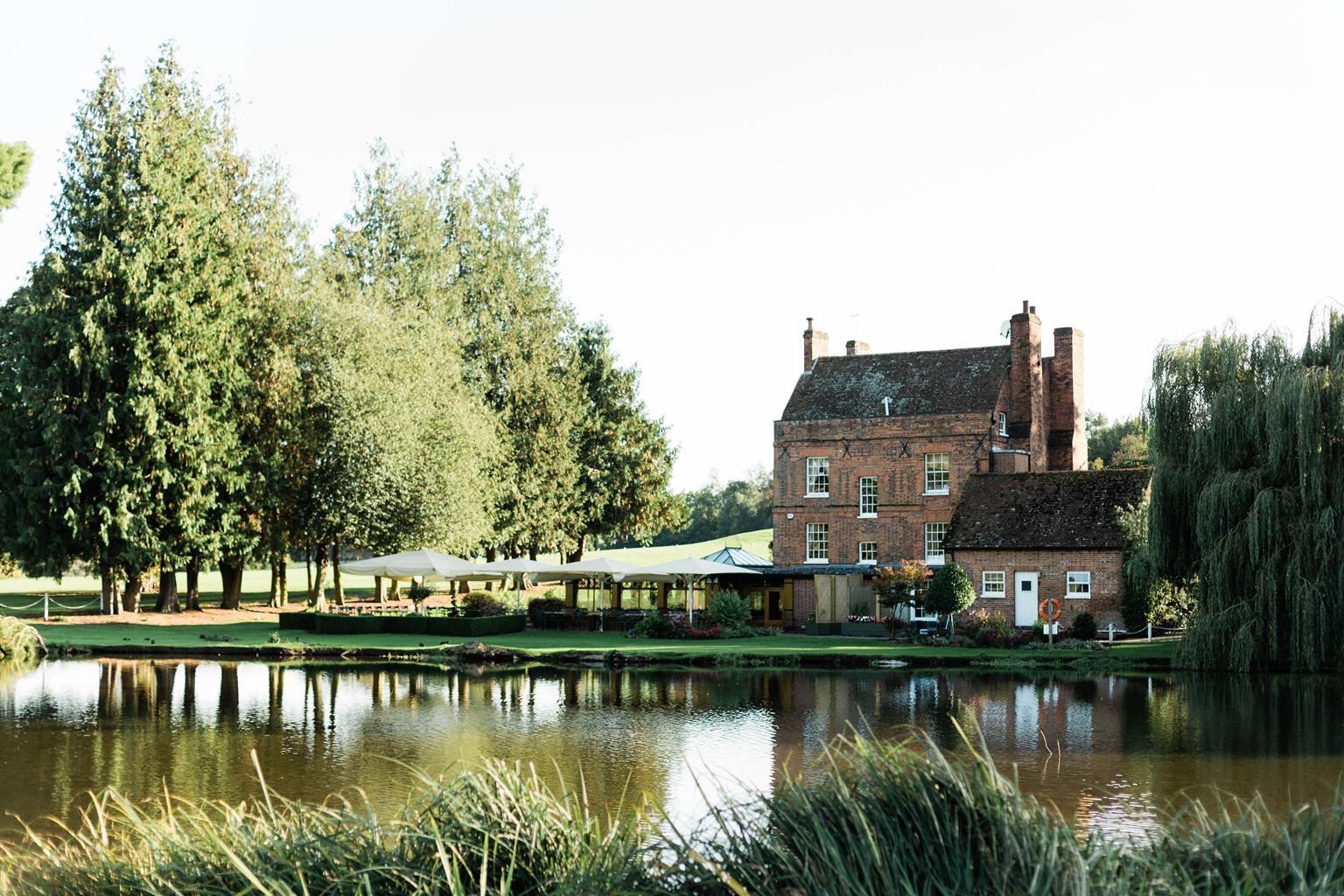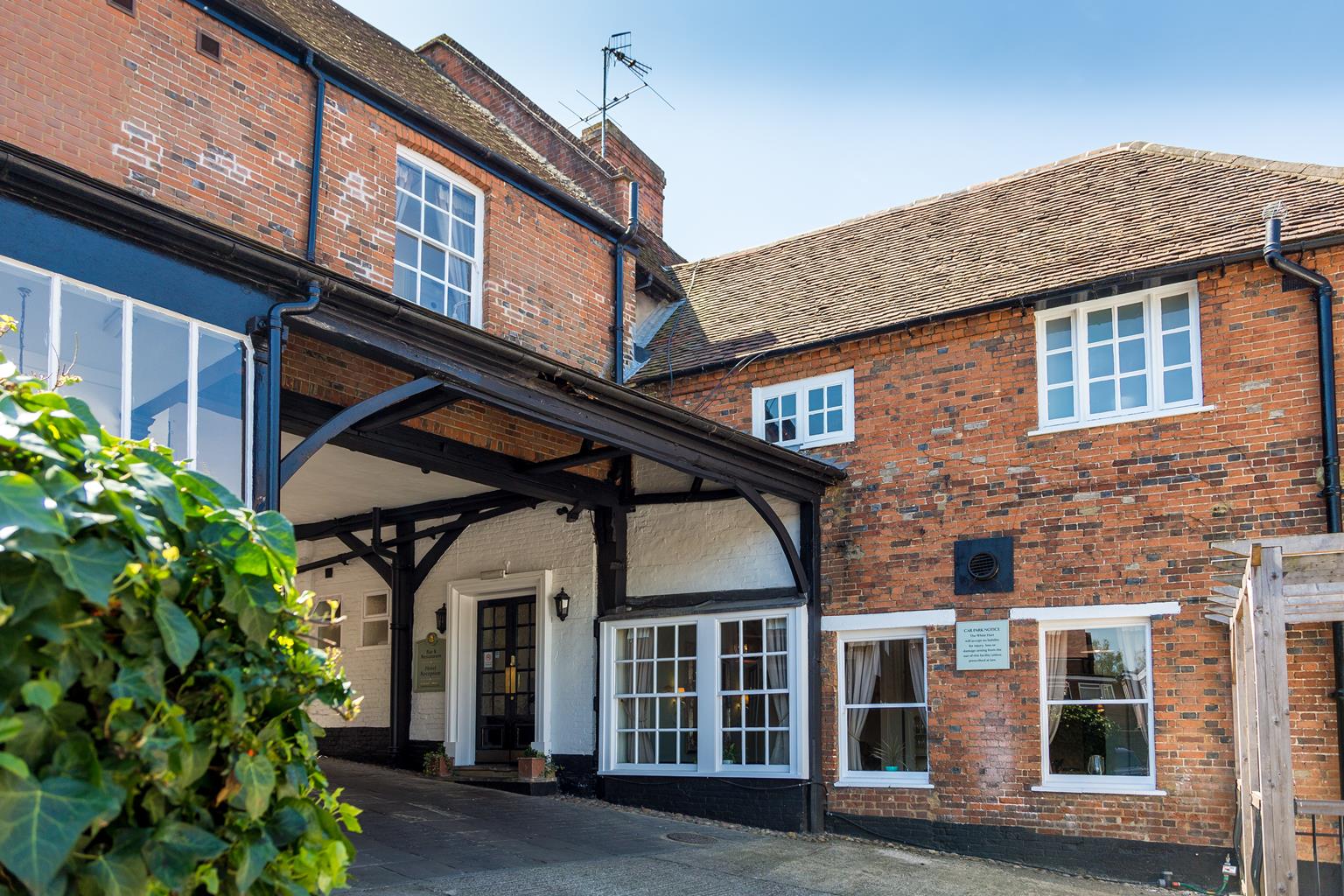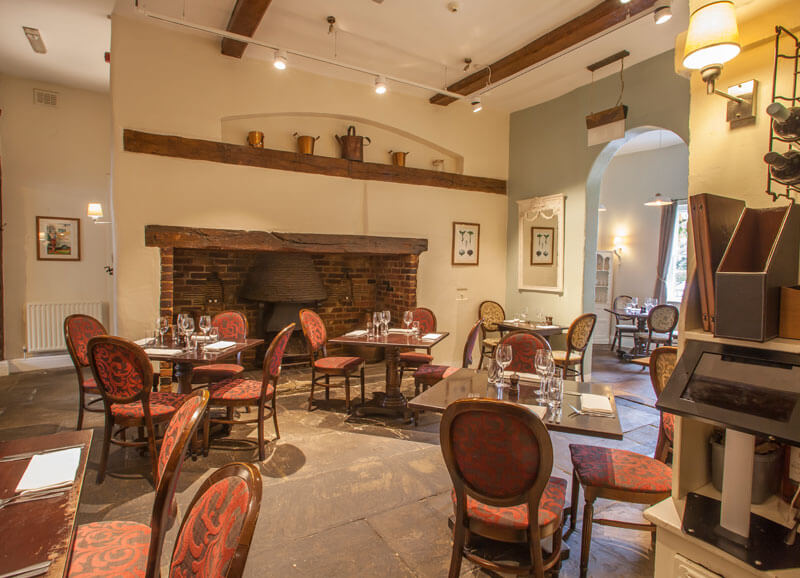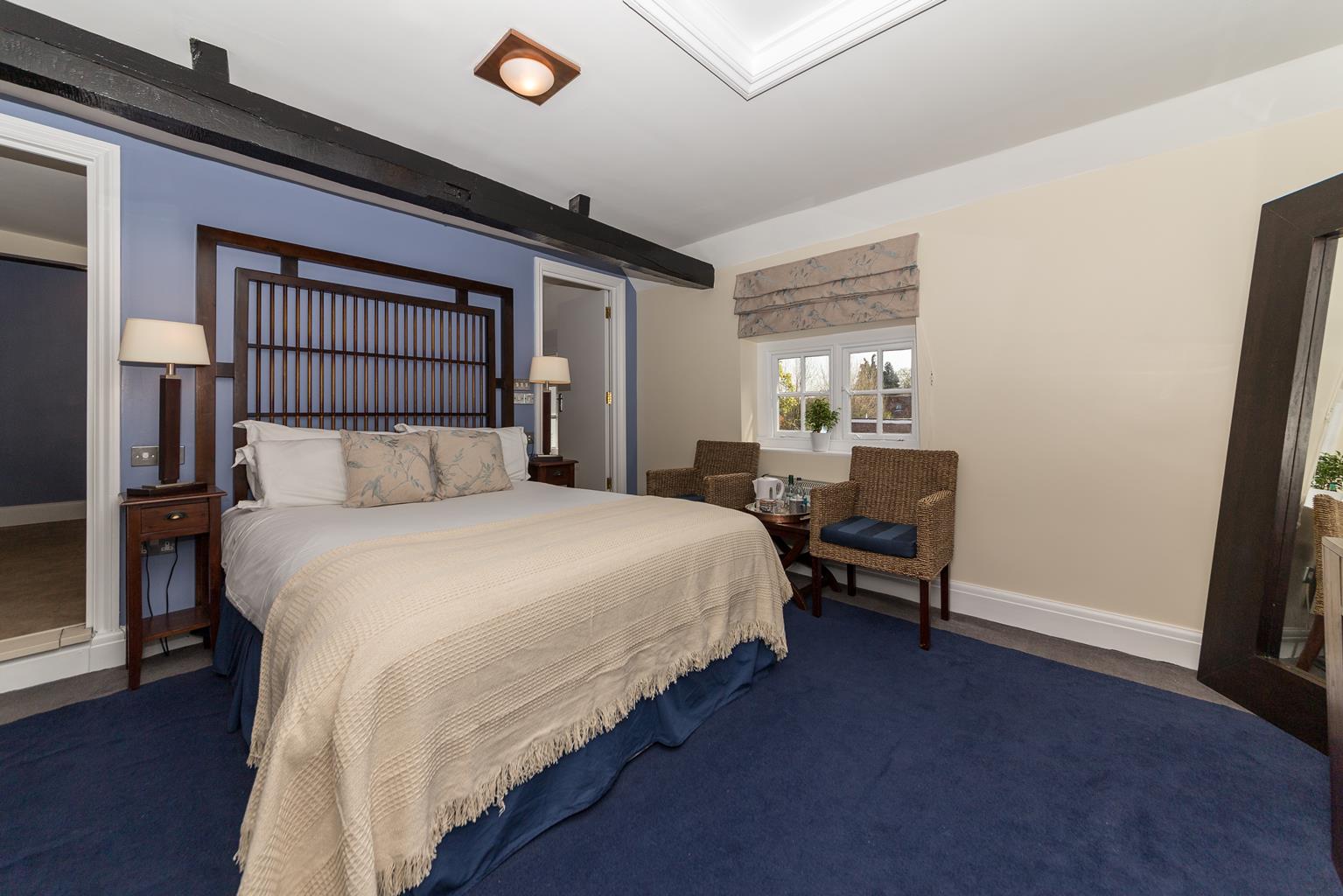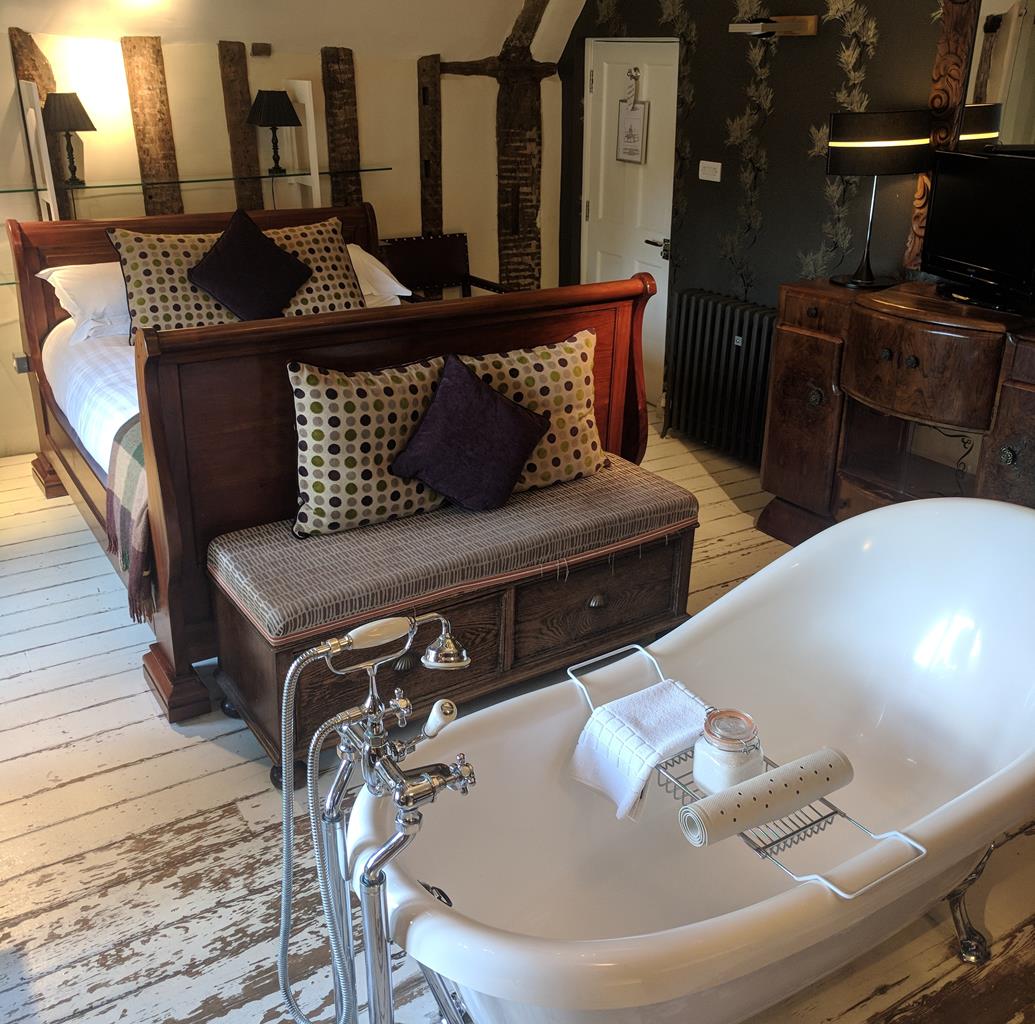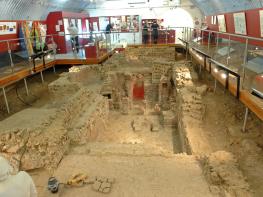This site provides much needed camping facilities close to London. Situated on level ground…
Around Little Berkhamsted

4 miles (6.4kms)
About the walk
The two small villages at each end of this walk, Essendon and Little Berkhamsted, are on ridges deeply divided by northward flowing streams heading into the Lea Valley. Beatrix Potter is known to have loved this area – she used to stay with her grandmother at Camfield Place, south of Essendon. Between the two villages you cross and re-cross a golf course, the Hatfield London Country Club. This is the former parkland to Bedwell Park, whose original emparking of 800 acres (324ha) was licensed in 1406 to John Norbury. A brick house was built around 1470 for Sir John Say. It was visited in 1522 by Princess Mary Tudor, who was to become the last overtly Roman Catholic English monarch. Little of this house remains: it has been refronted and altered many times since, and particularly heavily in the 1860s when it also acquired a west tower. The park was extended and given an 18th-century flavour before, in the 20th century, it succumbed to the leisure industry and became a golf club. The streams have been made good use of for ornamenting and enhancing the different courses, being dammed in places to form ponds.
Little Berkhamsted
The most interesting houses in Little Berkhamsted lie to the east of St Andrew's Church, along the road towards the Bucks Alley junction. You emerge from Breach Lane beside the mid-18th-century, brick-fronted Little Berkhamsted House. This five-bay, three-storey structure has its roof concealed behind a parapet. Opposite is the Old Rectory, from earlier in the 18th century,with five bays of box sash windows and a central, Tuscan pedimented doorcase. Looking left you see Stratton's Folly tower, which was built to enable Admiral Stratton to see shipping on the Thames. The tower comprises several storeys and a battlemented top with a grander, arcaded storey halfway up. Return to the church, which dates mainly from 1857 and 1894, although the south door looks like a reused Jacobean one. In addition, some of the east and west walls apparently remain from the church which was rebuilt in 1647. Inside, some monuments from the older church were reset. The lychgate of 1904 leads back into the main village street, Church Road, and to the part-Tudor Five Horseshoes pub (beside pleasant, weatherboarded cottages, opposite the church).
Stylish Essendon
Essendon's church is much more interesting. It dates mostly from 1883, when it was rebuilt by the architect William White in an Arts and Crafts style. The west tower, though, is 15th century and has a poignant stone plaque on a buttress:
'A young man who suffered at Hertford for theft in 1785 begged a grave in this churchyard and prayed to God that his suffering might be a warning to others.'
The 'suffering' referred to was, of course, being hanged.
Walk directions
From Church Road go through the recreation ground, through a gate and turn right along a paddock. Go out beside a gate and turn left, the lane descending to a bridleway sign.
Turn right through some gates, past an estate lodge. Beyond Danes Farm the tarmac track becomes a green-lane bridleway. Later it descends into oak and hornbeam woodlands, passing another lodge.
Bear left to cross the stream and go straight on along a metalled track, past the golf club estate's yard. Now, amid the golf course, continue towards the club house, a large, barn-like complex. On reaching it turn right, then left and continue straight on, the path now a narrow green lane. Merging with an access drive, turn left at School Lane.
Now in Essendon, turn right at the main road and head to the left of the war memorial to the churchyard, entering through the 1919 war memorial lychgate. Leave the churchyard by the lychgate, turning left on to a lane to descend to a footpath. Go right, through a gate, alongside the garden of a house called The Wheatsheaf (formerly the village pub). Next, head across the paddock towards the left-hand house.
Go through a kissing gate and cross the road to a footpath sign for Lower Hertford Road. Go through another kissing gate and keep ahead across the field. Through a gap in the hedge, re-emerge on the golf course. Cross a fairway and go straight on along a track. At a junction go straight over and keep ahead, the metalled path becoming a descending grass path.
Cross the stream on a footbridge, turning left on to an access road. After about 100 paces turn right to a stile behind a horse field-shelter. Ascend the paddock, heading for a large oak tree. Cross a stile and turn left on to a lane, which curves right past Howe Green Hall.
Turn sharp right immediately past East Lodge. Go over another stile, walk alongside the hedge, then cross a footbridge. Carry straight on across a pasture, aiming for a thick hedge. Cross a plank footbridge then another field and two stiles before joining a bridleway to the left of Ashfield Farm. Cross a stream by a footbridge and bear left beside paddock fencing up a long pasture field. At the top turn right on to a lane into Little Berkhamsted. To the left are views of Stratton's Folly tower.
At the road cross to the churchyard path, to the right of the Old Rectory. Pass the church and go through the lychgate, back into Church Road, and turn left to the Five Horseshoes pub.
Additional information
Bridleways, field paths and golf course
Ridges and valleys, pine trees around golf course
Beware flying golf balls, hidden golf balls (fun to find, easy to swallow) and pony paddocks
OS Explorer 182 St Albans & Hatfield
Lay-by opposite Five Horseshoes pub, beside recreation ground, Church Road, Little Berkhamsted
None on route
WALKING IN SAFETY
Read our tips to look after yourself and the environment when following this walk.
Find out more
Also in the area
About the area
Discover Hertfordshire
As Hertfordshire is so close to London, many of its towns have become commuter havens. St Albans, less than 19 miles (30km) from the capital, has retained its distinctive character, along with many historic remains. The Roman city of Verulamium is situated in a nearby park, and excavations have revealed an amphitheatre, a temple, parts of the city walls and some house foundations. There are also some amazing mosaic pavements.
The abbey church at St Albans is thought to have been built on the same site where St Alban met his martyrdom in the 3rd century. The abbey was founded in 793 by King Offa of Mercia, and contains the saint’s shrine, made of Purbeck marble. Lost for years, it was discovered in the 19th century, in pieces, and restored by the designer of the red telephone box, Sir Giles Gilbert Scott. The abbey also contains some wonderful medieval wall paintings. Nicholas Breakspear was born in St Albans, the son of an abbey tenant. In 1154 he took the name Adrian IV, and became the first, and so far only, English pope. Another famous son of Hertfordshire was Sir Francis Bacon, Elizabethan scholar and Lord High Chancellor, born in Hemel Hempstead in 1561.
Nearby stays
Restaurants and Pubs
Nearby experiences
Recommended things to do
Why choose Rated Trips?
Your trusted guide to rated places across the UK
The best coverage
Discover more than 15,000 professionally rated places to stay, eat and visit from across the UK and Ireland.
Quality assured
Choose a place to stay safe in the knowledge that it has been expertly assessed by trained assessors.
Plan your next trip
Search by location or the type of place you're visiting to find your next ideal holiday experience.
Travel inspiration
Read our articles, city guides and recommended things to do for inspiration. We're here to help you explore the UK.



